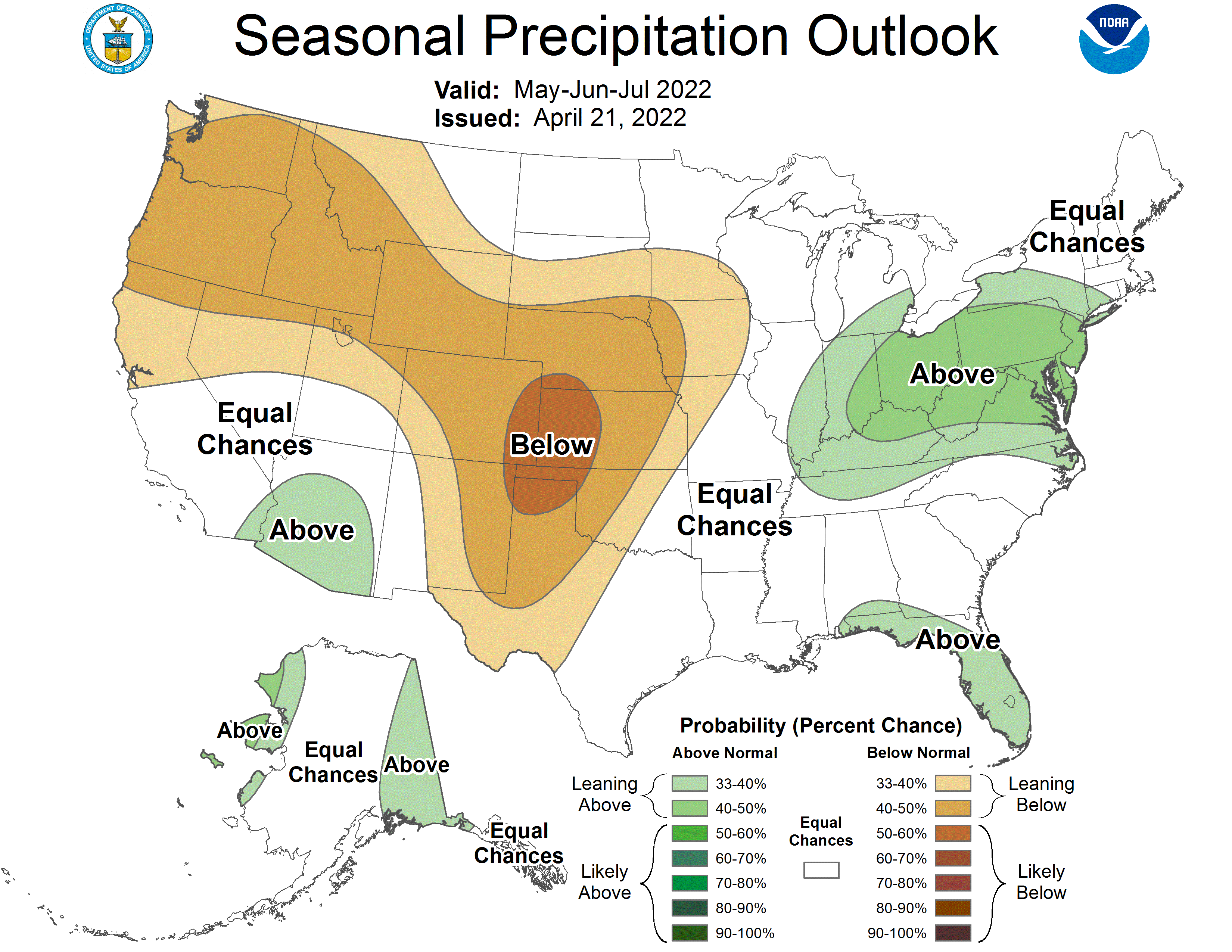On the third Thursday of every month, the national Climate Prediction Center releases their 3-month climate outlook for temperature and precipitation. These outlooks are presented as the level of confidence (i.e., probability of occurrence) for conditions to be above or below normal. Since last fall, these outlooks have been consistently favoring above-normal temperatures and precipitation for Indiana. This suggested significant influence from the La Niña phase of oceanic temperatures over the tropical Pacific Ocean that has global impacts. Earlier models assumed that this La Niña event would weaken, transitioning to a more neutral phase by late spring. However, it has not shown much weakening, suggesting significant confidence that La Niña will continue into late summer. While this has happened in the past, the few cases coupled with the significant changes in global climates have made it difficult to draw strong comparisons for what to expect over the next few months. Regardless, the variety of climate models that contribute to the final climate outlooks have provided some guidance. For May, the climate outlooks are favoring cooler-than-normal temperatures and above-normal precipitation. Now that the temperature outlook has flipped from favoring above-normal temperatures to below-normal temperatures, there is increased concern that the number of favorable field days will be reduced. Lower temperatures will reduce evapotranspiration rates causing soil conditions to remain wetter for longer. The May-June-July climate outlook for temperature is indicating that the various climate models were inconsistent on whether temperatures would be above, near, or below normal (Figure 1). However, the 3-month climate outlook for precipitation is still favoring above-normal amounts (Figure 2). It is important to note, however, that if that outlook is correct, it only means that the 3-month total amount of precipitation is likely to be above normal with little-to-no guidance on its timing.
The recent cooler temperatures across Indiana has led to a slow start for accumulated modified growing degree days (MGDD) with a start date of April 1. Figure 3 shows accumulated MGDDs ranging from the upper 30s in the northern counties to the lower 100s in southern Indiana. This is anywhere from 30 to 90 units below normal with the greatest differences occurring in southern Indiana (Figure 4).

Figure 1. Temperature outlook for the May-June-July 2022 period. These are produced by the national Climate Prediction Center and illustrate confidence of favoring above- or below-normal conditions.

Figure 2. Precipitation outlook for the May-June-July 2022 period. These are produced by the national Climate Prediction Center and illustrate confidence of favoring above- or below-normal conditions.




